
Find Help
More Items From Ergsy search
-

What are SEND children?
Relevance: 100%
-

Who are SEND children?
Relevance: 100%
-

Do SEND children attend mainstream schools?
Relevance: 90%
-

How is progress measured for SEND children?
Relevance: 89%
-

Can SEND children access extracurricular activities?
Relevance: 87%
-

What support is available for SEND children in schools?
Relevance: 86%
-
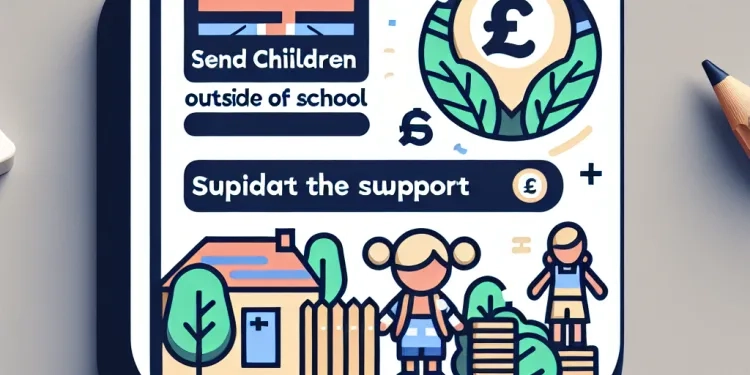
What support is available outside of school for SEND children?
Relevance: 84%
-
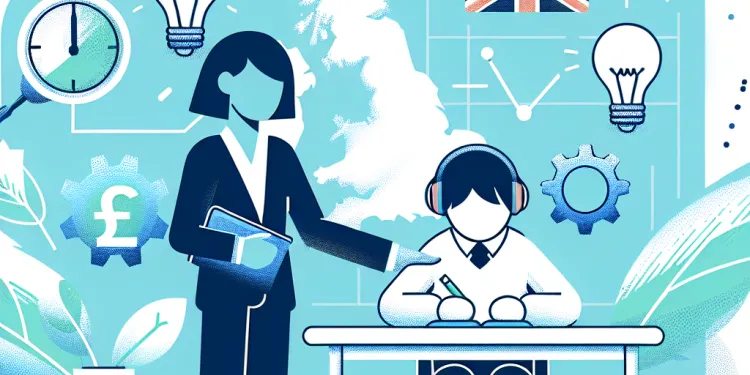
What role do teachers play in supporting SEND children?
Relevance: 82%
-

How can schools create an inclusive environment for SEND children?
Relevance: 78%
-

Are there specific laws governing SEND in schools?
Relevance: 67%
-

What does SEND stand for?
Relevance: 65%
-

Who is responsible for assessing SEND needs?
Relevance: 64%
-

How are parents involved in the SEND process?
Relevance: 64%
-

What are some common misconceptions about SEND?
Relevance: 63%
-

Can SEND status change over time?
Relevance: 63%
-

How do funding and resources affect SEND support?
Relevance: 60%
-

What are some common types of SEND?
Relevance: 58%
-

Can I send money to an inmate?
Relevance: 56%
-

How do I send books or magazines?
Relevance: 53%
-

Why does my email appear to be sending spam?
Relevance: 51%
-

What items can I send to someone in prison?
Relevance: 51%
-

How can I identify if my child has SEND?
Relevance: 45%
-

How can parents advocate for their SEND child?
Relevance: 44%
-
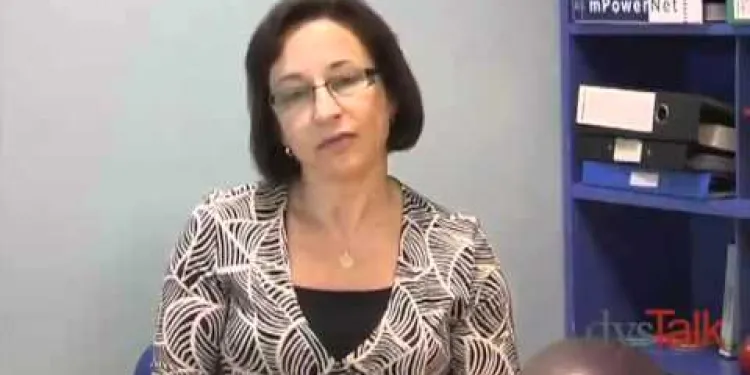
Dyspraxia Children: How to Help
Relevance: 42%
-

Is Baxdrostat suitable for children?
Relevance: 40%
-
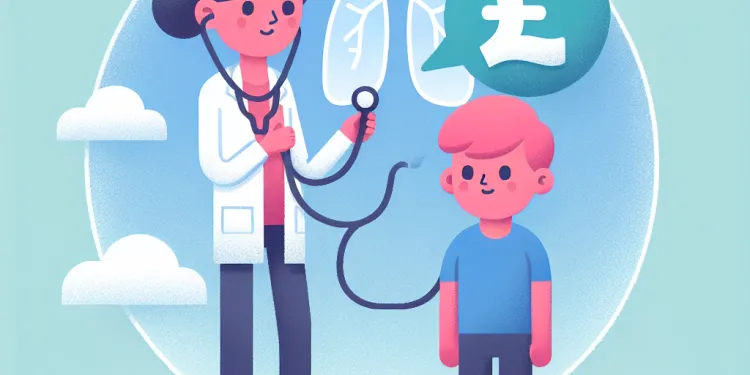
What is lupus in children?
Relevance: 40%
-

Lupus in children | NHS
Relevance: 40%
-

Children's Vaccination Schedule
Relevance: 39%
-

What causes lupus in children?
Relevance: 38%
-

Is tooth decay common in children?
Relevance: 38%
-

Are there specific mobility equipment for children?
Relevance: 38%
-

Can children use Mounjaro?
Relevance: 38%
-

Can children outgrow asthma?
Relevance: 38%
-
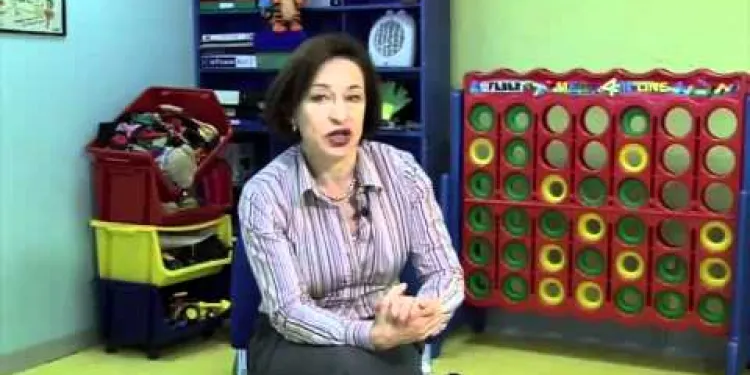
Children With Co-ordination Difficulties and Dyspraxia
Relevance: 38%
-
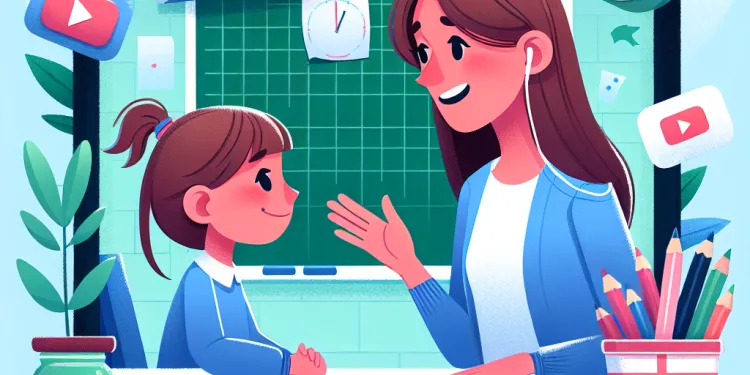
Understanding Mental Health in Children
Relevance: 38%
-

Can Wegovy be used by children?
Relevance: 38%
-

Can defibrillators be used on children?
Relevance: 37%
-

How is lupus diagnosed in children?
Relevance: 37%
-
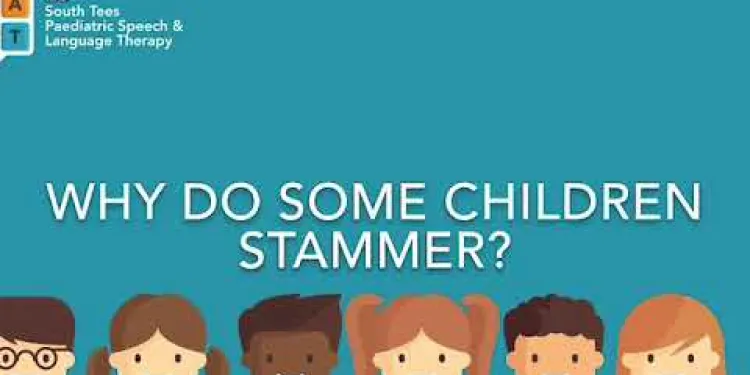
Why do some children stammer?
Relevance: 37%
-

What are the common symptoms of lupus in children?
Relevance: 36%
Understanding SEND Children
SEND stands for Special Educational Needs and Disabilities, and refers to children in the UK who require additional or tailored support in their education due to a range of needs. These children may face challenges that affect their learning in one or more areas, and the support they receive is critical to their educational development and personal well-being.
Categories of Special Educational Needs
SEND children typically fall into one or more of the following broad categories: communication and interaction, cognition and learning, social, emotional and mental health difficulties, and sensory and physical needs. Each of these categories encompasses various specific conditions and requires tailored educational strategies. For instance, communication and interaction needs can include autism spectrum disorder and speech and language difficulties.
Identification and Assessment
Early identification of SEND is crucial for providing the appropriate support and resources. The process often begins with teachers or parents noticing specific challenges faced by a child in their educational environment. Assessments are then conducted, often involving educational psychologists or other specialists, to determine the nature and extent of the child's needs. These assessments help in formulating an Individual Education Plan (IEP) or an Education, Health and Care Plan (EHCP), specifying the support required.
Support and Interventions
SEND support in UK schools focuses on integrating children into mainstream education wherever possible, ensuring inclusivity. Adjustments might include specialized teaching methods, the use of assistive technology, or providing additional teaching assistants. For some children, special schools with specific expertise and facilities may be the most suitable environment. The goal is to provide an education that nurtures each child's needs and potential.
Role of Parents and Guardians
Parents and guardians play a vital role in the support system for SEND children. In collaboration with schools, they help to tailor the educational experience to suit the child’s specific needs. Communication between families and educational institutions is essential, and parents have the right to be involved in decision-making processes related to their child's education. Support groups and local authorities can also provide additional resources and assistance.
Legislation and Guidance
The UK's approach to SEND is governed by various legislative frameworks, including the Children and Families Act 2014 and the Special Educational Needs and Disability Code of Practice. These legislations ensure that children with SEND have their needs met systematically and that schools and local authorities are accountable for the support provided. The system is designed to protect the rights of children and ensure they receive a fair and appropriate education.
The Importance of Inclusion
Inclusion is at the heart of the UK's educational ethos for SEND children. It emphasizes the importance of ensuring all children feel valued and integrated within the school community. Schools are encouraged to foster environments where diversity is celebrated, and all pupils, including those with SEND, can thrive academically and socially. This approach benefits all students by promoting empathy, understanding, and diversity.
Understanding SEND Children
In the UK, SEND means Special Educational Needs and Disabilities. These children need extra help in school because they have different needs. This help is very important for them to learn and feel good about themselves.
Categories of Special Educational Needs
SEND children might need help in talking and interacting, learning and thinking, emotions and feelings, or with their senses and moving. Each group has different needs, like autism, or finding it hard to talk. They all need special ways to learn.
Identification and Assessment
It’s important to find out if a child has SEND early on. This usually starts when teachers or parents see the child having difficulties at school. Experts then do tests to find out what help the child needs. This helps make a special plan called an Individual Education Plan (IEP) or an Education, Health and Care Plan (EHCP) to show how the child will be supported.
Support and Interventions
In the UK, schools try to include SEND children in regular classes as much as possible. They use special ways to teach, helpful gadgets, or extra teachers. Some children might go to special schools that have the right tools and skills. The aim is to give each child what they need to succeed.
Role of Parents and Guardians
Parents and guardians help a lot in supporting SEND children. They work with schools to make sure the education fits the child. Talking with schools is important, and parents can help decide the best plans for their child’s education. There are also support groups and local help available.
Legislation and Guidance
In the UK, there are rules like the Children and Families Act 2014 to make sure SEND children get the right help. These rules make sure schools and local places do their job well. The aim is to protect the rights of SEND children and give them a good education.
The Importance of Inclusion
Inclusion is about making sure SEND children feel like they are part of the school. It’s important that all children, including those with SEND, feel accepted and can do well. Schools try to create a community where everyone is valued and differences are celebrated. This helps all children understand and care for each other.
Frequently Asked Questions
What does SEND stand for?
SEND stands for Special Educational Needs and Disabilities.
Who are SEND children?
SEND children are those who have special educational needs and/or disabilities that require additional support in their education.
What qualifies as a special educational need?
A special educational need is a requirement for extra support due to learning difficulties or disabilities that make it harder for the child to learn compared to their peers.
What types of disabilities might SEND children have?
SEND children might have physical disabilities, cognitive or learning disabilities, sensory impairments, or social, emotional, and mental health issues.
How are SEND needs identified?
SEND needs are typically identified through assessments by educational professionals, healthcare providers, and observations from teachers and parents.
Is there a formal plan for supporting SEND children?
Yes, an Education, Health and Care Plan (EHCP) is commonly used to outline the support required for a SEND child.
What role do teachers play in supporting SEND children?
Teachers support SEND children by adapting lessons, using specialized teaching techniques, and working with other professionals to meet the child's unique needs.
Are all SEND children entitled to an EHCP?
Not all SEND children require an EHCP; some may receive the necessary support through a school’s SEN (Special Educational Needs) support services without needing an EHCP.
How does SEND support differ from regular education?
SEND support often includes individualized learning plans, specialized resources, and additional assistance to ensure the child can access the curriculum effectively.
What is the role of parents in the education of SEND children?
Parents are crucial in advocating for their child's needs, collaborating with educators, and providing additional support at home.
Can SEND needs change over time?
Yes, SEND needs may change as a child develops, requiring ongoing assessment and adjustments in support strategies.
How do schools ensure inclusivity for SEND children?
Schools ensure inclusivity by providing accessible environments, adaptive technology, and implementing inclusive teaching strategies.
What is the significance of early identification of SEND needs?
Early identification allows for timely interventions, which can significantly improve educational and developmental outcomes for SEND children.
Do SEND children attend special schools?
SEND children may attend mainstream schools, special schools, or have integrated placements depending on their needs and local provisions.
What is a Special Educational Needs Coordinator (SENCO)?
A SENCO is a teacher responsible for coordinating the support for children with SEND in a school.
How does legislation support SEND children?
Legislation such as the Children and Families Act in the UK ensures that SEND children have access to the support they need in education.
Can SEND children achieve academically?
Yes, with the right support, SEND children can achieve academic success and fulfill their potential.
What training do teachers get for teaching SEND children?
Teachers receive specialized training in inclusive education, differentiation techniques, and may attend workshops or courses on specific SEND issues.
What is the role of healthcare professionals in SEND education?
Healthcare professionals like therapists and psychologists often work with educators to provide comprehensive support to SEND children.
How can technology assist SEND children in their learning?
Technology such as assistive software, communication devices, and learning apps can help SEND children access the curriculum and communicate effectively.
What does SEND stand for?
SEND means Special Educational Needs and Disabilities. This is about kids and adults who need extra help with learning or have disabilities.
If you need help reading or understanding, you can ask a parent, teacher, or use a reading app to help you.
SEND means Special Educational Needs and Disabilities.
Who are SEND children?
Some children need extra help at school. These children are called SEND children. SEND means Special Educational Needs and Disabilities.
These children might find learning or playing difficult. They might need help to see, hear, or move around. Some might need support to understand things.
Schools and teachers are there to help SEND children. They use tools and techniques like:
- Using simple words and pictures to explain things.
- Giving extra time to finish work or games.
- Helping children talk about their feelings.
Remember, every child is special and learns in their own way!
SEND children are kids who need extra help to learn because they have special needs or disabilities.
What is a special educational need?
Some children need extra help at school. This is called a special need. It means they find learning a bit harder than other kids.
What kinds of disabilities can SEND children have?
SEND stands for Special Educational Needs and Disabilities. Children with SEND might have different needs.
Here are some examples:
- Learning problems: They may find reading, writing, or maths hard.
- Physical disabilities: They might have trouble walking or using their hands.
- Hearing problems: They might need hearing aids.
- Vision problems: They might wear glasses or use other tools to see better.
- Communication issues: They might have trouble talking or understanding words.
- Behavioral or emotional challenges: They might feel upset or anxious easily.
These children might use special tools or need extra help at school. Tools like hearing aids, glasses, or computers can make learning easier for them. Teachers and helpers can also give extra support. This helps them learn and play with other kids.
Children with SEND can have different kinds of challenges. They might have trouble moving because of their bodies, trouble learning because of their brains, difficulties seeing or hearing, or problems with their feelings or how they act.
How do we find out if someone needs SEND support?
Some children need extra help at school. We call this SEND support.
Here's how we find out if a child needs SEND support:
- Watch and Listen: Teachers look at how a child works and plays. They listen to how children talk and ask for help.
- Ask Parents: Teachers talk to parents. Parents know a lot about their children and can tell us what they see at home.
- Get Help from Experts: Sometimes, schools ask for help from special teachers or doctors who know a lot about SEND.
If you think a child may need extra help, here are some things you can do:
- Talk to the teacher and share what you see at home.
- Write down things that are hard for the child and show it to the teacher.
- Ask the school for advice or help.
SEND needs are usually found out through tests by teachers, doctors, and by watching how a child learns or behaves at school and home.
Is there a plan to help children with special needs?
Yes, schools have a plan to help children with special needs. This is called a 'support plan'.
A support plan says how the school will help you.
Here are some things that might be in a support plan:
- Extra time with a teacher to help you learn.
- Using special tools like computers or apps to help you.
- Having extra lessons for subjects that are hard for you.
- A quiet space where you can go if you need to calm down.
If you or your parents want to know more, you can ask the school for details.
Yes, an Education, Health and Care Plan (EHCP) is a plan that shows what help a child with special needs will get.
How do teachers help SEND children?
Teachers help children who have special needs (SEND) in many ways. They make lessons easier to understand. Teachers give extra help when needed. They show kindness and patience to all students. They also work with other helpers, like teaching assistants. Teachers use special tools and games to help children learn. They also talk with parents to share how their child is doing. Everyone works together to make sure children feel happy and safe at school.
Teachers help children who need extra support by changing lessons, using special ways to teach, and working with other experts to help the child learn better.
Does every child with SEND get an EHCP?
Not all children with SEND need an EHCP. Some children get the help they need from their school's SEN support services, and they do not need an EHCP.
What is different about SEND help and regular school?
SEND means "Special Educational Needs and Disabilities." Sometimes, kids need extra help at school. This is called SEND support.
Here's how SEND help is different from regular school:
- SEND help gives extra support to kids who need it.
- The teachers use special ways to help kids learn.
- Kids might have a helper in class.
- There might be special tools to use, like computers or books.
If you need help, you can talk to your teacher, a helper, or your family.
SEND help gives extra support to children with special needs. This means special learning plans just for them, special tools to help them learn, and extra help to make sure they can learn well at school.
How can parents help children with special needs at school?
Parents can do lots to help children with special needs learn. They can work with teachers to make a plan for their child. They can also talk to their child about school and listen to what they have to say.
Parents can help their child with homework by breaking tasks into small steps. They can use pictures or drawings to explain things.
There are tools that can help. For example, timers can show how much time is left for a task. Visual schedules can help children know what comes next in the day.
Parents should encourage their child and praise them when they do well. This makes the child feel good and helps them try their best.
Parents are very important. They help make sure their child gets what they need. They work together with teachers and help at home too.
Do SEND needs change?
Yes, as a child grows, their needs might change. It's important to keep checking and changing the help they get to make sure it suits them.
How do schools make sure all children can learn?
Schools work hard to make sure all kids, including those who need extra help, can learn together. These kids are sometimes called SEND children, which means Special Educational Needs and Disabilities. Here are some ways schools help:
- Extra Support: Teachers give more help to children who need it. This might be in smaller groups or one-to-one.
- Special Tools: Some children use special tools like computers or talking devices to help them learn.
- Friendly Classrooms: Classrooms are set up so everyone can move around easily and feel comfortable.
- Training for Teachers: Teachers learn how to help all students, especially those who need extra support.
- Teamwork: Schools work with parents and specialists to make the best plan for each child.
If you or your child needs more help, you can talk to the teachers. They are there to help everyone learn and feel included.
Schools make sure everyone feels included. They do this by making sure the school is easy for everyone to get around. They also use special technology to help students learn. Teachers use different ways to teach so everyone can join in and learn together.
Why is it important to find SEND needs early?
Finding SEND needs early helps children get the right support fast. This makes it easier for them to learn and play with others.
Using tools like pictures and simple checklists can help spot SEND needs. Talking to teachers and parents also helps.
Finding out if a child has SEND early on is important. It helps them get support quickly, which can make a big difference in how well they do in school and in their development.
Do SEND children go to special schools?
SEND stands for Special Educational Needs and Disabilities. Some children with SEND go to special schools. These schools are made just for them. Other children might go to regular schools. It depends on what is best for each child.
If you want to know more, you can:
- Ask a teacher for help.
- Talk to someone who knows about SEND.
- Look for information in easy-to-read books or websites.
Children with SEND (Special Educational Needs and Disabilities) can go to different types of schools. They might go to regular schools, special schools, or a mix of both. It depends on what they need and what's available nearby.
What is a Special Educational Needs Coordinator (SENCO)?
A Special Educational Needs Coordinator, or SENCO, is a teacher who helps children who find learning hard. They make sure these children get the extra help they need at school.
SENCOs work with teachers and parents to plan and give the right support to each child. They might use special tools, like picture cards or fun games, to help children learn better.
If you think a child needs extra help, you can talk to the SENCO at their school. They are there to support and help all the children learn.
A SENCO is a teacher who helps kids with special learning needs at school. They make sure kids get the support they need to learn best.
How do laws help children with SEND?
Laws are rules that help everyone. There are special laws to help children with SEND (Special Educational Needs and Disabilities).
These laws say:
- Schools must help all children learn, including those with SEND.
- Teachers should give extra help to children who need it.
- Every child has the right to go to school and learn.
Tools that can help:
- Using pictures and videos in lessons.
- Having extra time to finish work.
- Getting help from a teaching assistant.
There are laws like the Children and Families Act in the UK. These laws help make sure children with special needs get the help they need in school.
Can children with SEND do well in school?
Yes, children with SEND (Special Educational Needs and Disabilities) can do well in school! They might learn in different ways, and sometimes they need extra help to learn best.
Here are some things that can help them:
- Supportive teachers: Teachers who know how to help children with different needs can make a big difference.
- Extra resources: Things like learning tools or special programs can help with learning.
- Personalized plans: Some children have special learning plans just for them. These plans make sure they get the help they need.
- Encouragement: It’s important for children to believe in themselves. Praise and support from family, friends, and teachers can help them feel good about their learning.
Yes, with the right help, children with special needs can do well in school and reach their goals.
What help do teachers get to teach SEND children?
Teachers learn how to help SEND children. They take special classes.
SEND means Special Educational Needs and Disabilities. It means a child might find learning harder.
Here are some ways teachers get ready:
- They go to training sessions to learn new skills.
- They talk to other teachers and share ideas.
- They read books and watch videos about SEND.
To help SEND children, teachers use special tools. These tools make learning easier:
- Visual aids like pictures and charts.
- Simplified texts for easier reading.
- Games and activities to make learning fun.
Parents and teachers can work together to help each child. It’s important to talk and share ideas.
Everyone can learn with the right help!
Teachers learn special ways to help all students. They learn how to teach different children in different ways. They may also go to special classes or meetings to learn more about helping students with special needs.
What do healthcare workers do to help with SEND education?
Doctors and counselors help teachers take care of kids with special needs. They work together to give these kids the best help they can.
How can technology help children with SEND learn?
Technology can help kids with special needs. Tools like special software, talking devices, and learning apps make it easier for them to learn and talk to others.
Useful Links
- Ergsy carfully checks the information in the videos we provide here.
- Videos shown by Youtube after a video has completed, have NOT been reviewed by ERGSY.
- To view, click the arrow in centre of video.
- Most of the videos you find here will have subtitles and/or closed captions available.
- You may need to turn these on, and choose your preferred language.
- Go to the video you'd like to watch.
- If closed captions (CC) are available, settings will be visible on the bottom right of the video player.
- To turn on Captions, click settings .
- To turn off Captions, click settings again.
More Items From Ergsy search
-

What are SEND children?
Relevance: 100%
-

Who are SEND children?
Relevance: 100%
-

Do SEND children attend mainstream schools?
Relevance: 90%
-

How is progress measured for SEND children?
Relevance: 89%
-

Can SEND children access extracurricular activities?
Relevance: 87%
-

What support is available for SEND children in schools?
Relevance: 86%
-

What support is available outside of school for SEND children?
Relevance: 84%
-

What role do teachers play in supporting SEND children?
Relevance: 82%
-

How can schools create an inclusive environment for SEND children?
Relevance: 78%
-

Are there specific laws governing SEND in schools?
Relevance: 67%
-

What does SEND stand for?
Relevance: 65%
-

Who is responsible for assessing SEND needs?
Relevance: 64%
-

How are parents involved in the SEND process?
Relevance: 64%
-

What are some common misconceptions about SEND?
Relevance: 63%
-

Can SEND status change over time?
Relevance: 63%
-

How do funding and resources affect SEND support?
Relevance: 60%
-

What are some common types of SEND?
Relevance: 58%
-

Can I send money to an inmate?
Relevance: 56%
-

How do I send books or magazines?
Relevance: 53%
-

Why does my email appear to be sending spam?
Relevance: 51%
-

What items can I send to someone in prison?
Relevance: 51%
-

How can I identify if my child has SEND?
Relevance: 45%
-

How can parents advocate for their SEND child?
Relevance: 44%
-

Dyspraxia Children: How to Help
Relevance: 42%
-

Is Baxdrostat suitable for children?
Relevance: 40%
-

What is lupus in children?
Relevance: 40%
-

Lupus in children | NHS
Relevance: 40%
-

Children's Vaccination Schedule
Relevance: 39%
-

What causes lupus in children?
Relevance: 38%
-

Is tooth decay common in children?
Relevance: 38%
-

Are there specific mobility equipment for children?
Relevance: 38%
-

Can children use Mounjaro?
Relevance: 38%
-

Can children outgrow asthma?
Relevance: 38%
-

Children With Co-ordination Difficulties and Dyspraxia
Relevance: 38%
-

Understanding Mental Health in Children
Relevance: 38%
-

Can Wegovy be used by children?
Relevance: 38%
-

Can defibrillators be used on children?
Relevance: 37%
-

How is lupus diagnosed in children?
Relevance: 37%
-

Why do some children stammer?
Relevance: 37%
-

What are the common symptoms of lupus in children?
Relevance: 36%